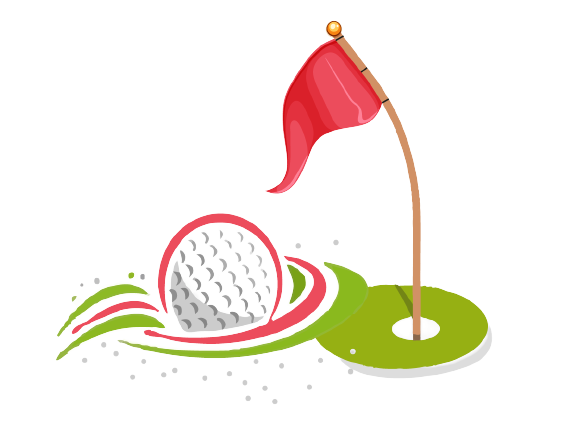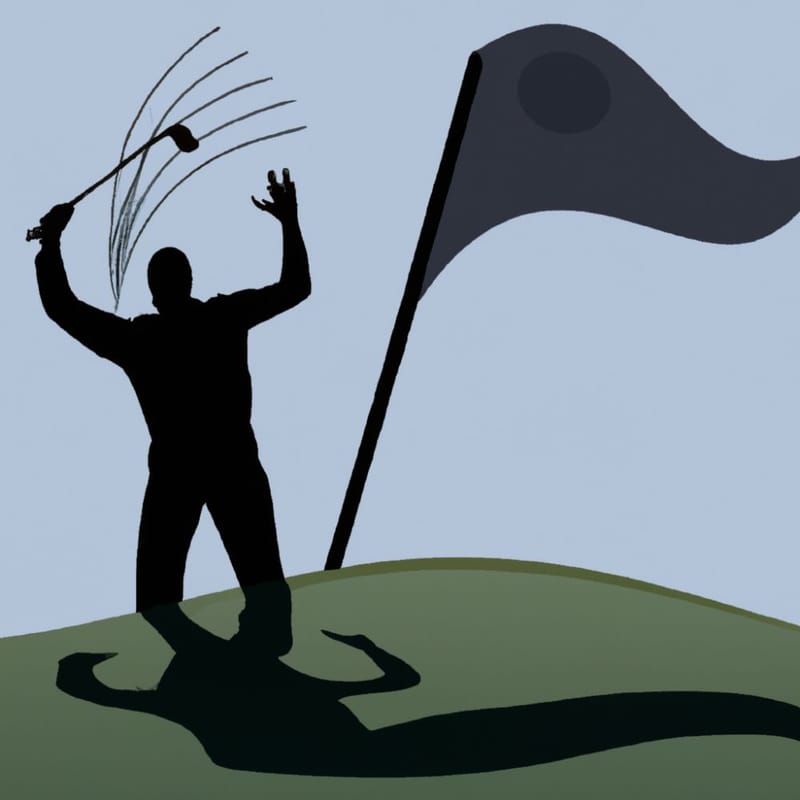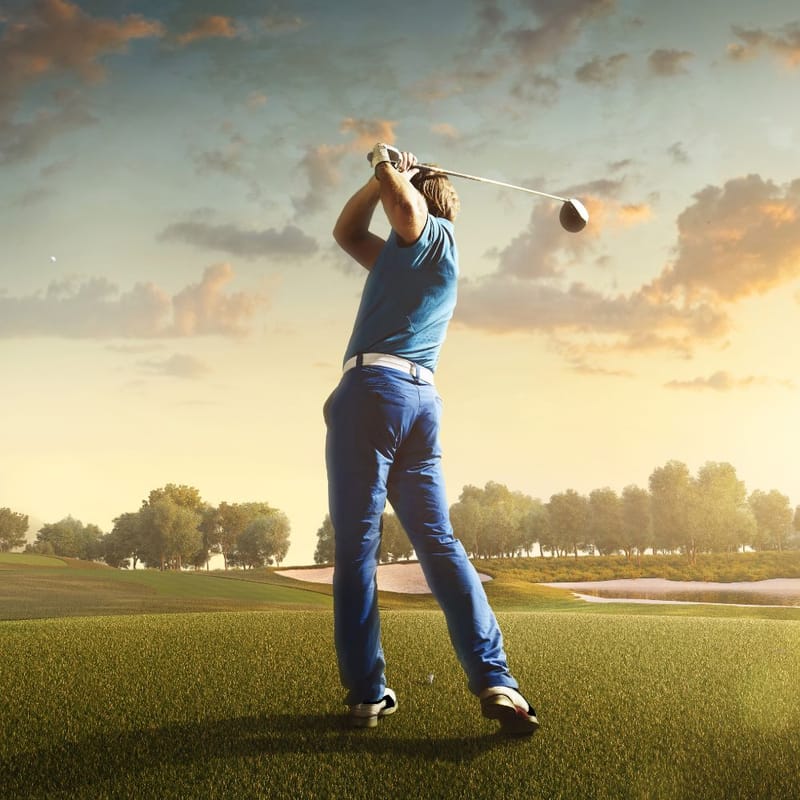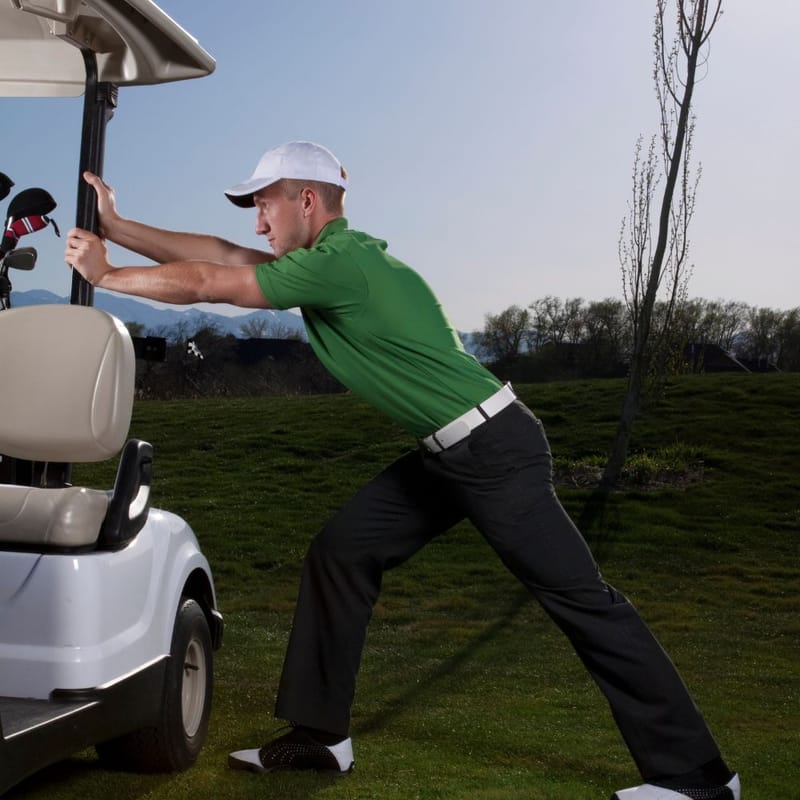Content Summary
Importance of Feet Position and Golf Ball Position in golf
Proper Foot Placement and Alignment in the Golf Swing
The feet' position and alignment are critical in establishing a solid, consistent golf swing.
As a weekend warrior, at times, I tend to place more emphasis on my upper body and arms during the golf swing. It's like my body has a mind of its own and takes over my swing.
Even though I know full well that a proper golf stance with proper footwork provides the foundation for good balance, weight transfer, and rotational movement, which relates to making proper contact with the golf ball.
It's something I work on continuously because it creeps back in every so often, without my realizing it, until my shots start to go way offline. Diligence is the key. We have to be aware of our bad habits so we can make adjustments more quickly.
This article will provide an in-depth look at optimal foot position and how to properly position your feet for all golf shots.
Why Foot Placement Matters
- Sets the necessary width and angle of the stance and swing plane.
- Allows for proper weight distribution and transfer during the backswing and downswing.
- Enables effective pivoting and rotation of core body parts.
- Aids in maintaining balance and posture aligned to the target.
- Provides a solid base of stability and control over the swing.
Correct foot positioning establishes the crucial framework upon which all other elements of the golf swing build. Mastering proper footwork techniques is essential for developing consistency and power.

Key Principles for Golf Stance
Golf Tips: Make sure to wear comfortable, well-fitting golf shoes and golf socks designed for blister-free play. This will allow you to focus on proper stance and foot position when making your perfect golf swing😁.

Foot Width
- Width of stance varies based on club selection. A wider stance is typically used for driver and woods, narrower for irons and wedges.
- General rule of thumb - stance about as wide as shoulder width for full swing shots.
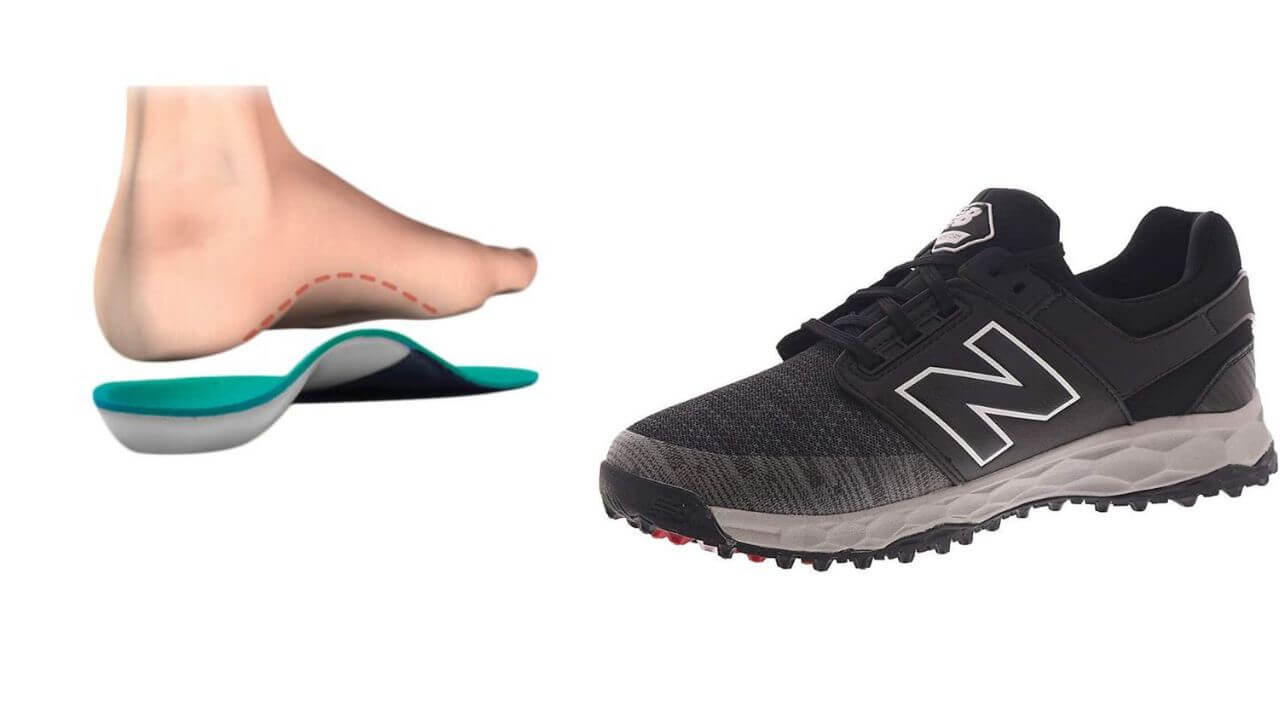
Foot Flare
- Right foot (for right-hand golfers) should be flared out 30-45 degrees from the target line.
- Left foot (for right-hand golfers) should be flared out 60-75 degrees.
- Flare allows for full hip and shoulder turn through impact.
Foot Leveling
- Feet should be level to the ground, not tilted or angled inward/outward.
- Level feet promote proper weight distribution and prevent slicing.
Foot Pressure
- Pressure should be centered on the balls of your feet, not on heels or toes.
- Weight balanced primarily on the front foot at the address.
- Transfer to the rear foot on the backswing, then back to the front foot on the downswing.

Foot Alignment
- Front foot aligned parallel to the target line.
- Rearfoot aligned perpendicular to target line.
- Consistent alignment ingrains proper swing path.
The Fundamentals of Proper Foot Placement
When setting up to hit any golf shot, there are basic rules to follow regarding foot positioning:
Stance Width and Alignment
- Stance should be the width of your shoulders apart for full-swing shots.
- For partial swings, the stance can be narrower.
- Feet should be flared out with the front foot at 30-45 degrees and the back foot at 60-75 degrees.
- Front foot should be parallel to the target line pointing at the intended target.
- Back foot should be perpendicular to the target line.
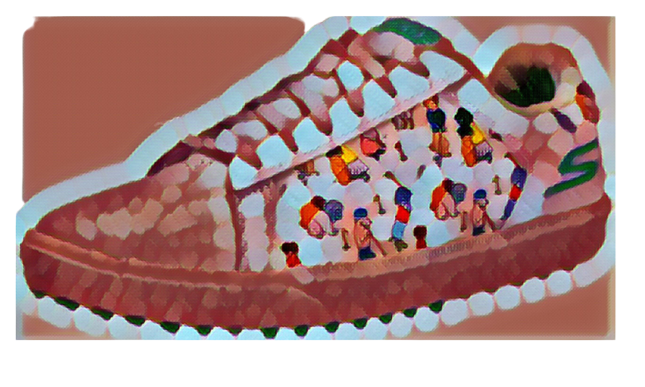
Weight Distribution
- At address, 60% of the weight should be on the front foot.
- During backswing, weight should transfer to the back foot.
- On the downswing, weight moves back to the front foot through impact.
Ball Position
- When using a driver, the ball is played off the front heel.
- For short irons, the ball is played middle to left of center.
- For mid-irons, the ball is centered between feet.
| Club Selection | Ball Position |
|---|---|
| Driver | Front heel |
| Mid-irons | Center |
| Short irons, wedges | Center to left of center |
Posture and Flex
- Maintain flex in knees to allow for athletic motion.
- Keep the torso and head in a posture aligned with the spine.
- Avoid dipping your head or slouching your shoulders.
Foot Leveling
- Feet should remain level to the ground, not tilted inward or outward excessively.
- Level feet assist with solid contact and prevent slicing.
Consistently following these basic foot position principles establishes a solid foundation for the golf swing. Foot placement directly impacts the swing plane, weight shift, balance, and rotation.
Correct Foot Alignment Setup
Proper alignment of both feet relative to the target line is critical for consistent ball striking.
Front Foot Alignment
- The front foot should be parallel to the target line.
- Point the front foot in the exact direction you want the ball to start on.
- The ball will tend to launch in the direction the front foot is aimed.
Back Foot Alignment
- The back foot should be perpendicular (90 degrees) to the target line.
- Having the back foot at a right angle allows for maximum shoulder turn in the backswing.
Checking Alignment to Target
- Place a club or alignment stick along the target line on the ground.
- Check that the front foot is parallel to the stick, and the back foot is perpendicular.
- Can also pick a specific mark or object behind the ball to aim the front foot at.
| Front Foot | Back Foot |
|---|---|
| Parallel to target | Perpendicular to target |
- After setup, step away and re-check alignment from behind.
- Have a friend or coach verify stance alignment.
- Use a mirror to observe stance alignment.
Consistent alignment between the front and back foot relative to the target line will:
- Ingrain proper swing path through impact.
- Promote solid ball contact and straight shots.
- Assist with correcting slices.
- Provide feedback on aim and accuracy.
Taking care to precisely align feet during every setup according to the target line is a vital habit for consistent ball striking.
Proper Foot Spacing and Stance Width
The distance between the feet, or stance width, is another key component of solid footwork.
General Guidelines
- For full-swing shots, a shoulder-width stance is recommended.
- Driver and woods use a slightly wider stance.
- Short irons and wedges allow for a narrower stance.
Wider Stance
- With the driver, the added stance width provides stability and balance.
- A wider base prevents swaying and sliding during the swing.
- Allows for bigger shoulder turns and extra power with the driver.
Narrower Stance
- With a wedge or short iron, a narrow stance is ideal.
- Keeps swing compact and prevents deceleration.
- Promotes clean contact on shorter shots into greens.
Modifying Based on Comfort
- Slight adjustments can be made based on flexibility and comfort level.
- Some golfers with limited flexibility prefer a wider stance.
- Senior golfers often benefit from a narrower stance.
Recommended Foot Spacing By Club
| Club | Stance Width |
|---|---|
| Driver | Wider than shoulders |
| Fairway woods | Slightly wider than shoulders |
| Long irons | Approximately shoulder-width |
| Mid irons | Slightly narrower than shoulders |
| Short irons | Noticeably narrower than shoulders |
| Wedges | Very narrow |
Dialing in the optimal foot spacing for your body type and club selection is imperative for maximizing both stability and flexibility in the golf swing.
Proper Foot Flare and Angle
Angling the feet outward, known as foot flare, is another essential alignment fundamental.
Importance of Foot Flare
- Flaring the feet outward allows for greater mobility in the hips and shoulders.
- The front foot should be flared out 30-45 degrees from the target line.
- The back foot should be flared out 60-75 degrees from the target line.
- This outward flare enables the necessary rotational movement in the backswing and downswing.
Benefits of Foot Angle
- Proper foot angling provides enhanced stability and balance.
- Feet remain grounded and connected throughout the motion.
- Weight can transfer effectively during the turning motion.
- Reduces stress on the knees compared to straight-on alignment.
Checking Foot Flare
- Use an alignment stick or club to check foot angles.
- Have the coach observe foot flare from the face on view.
- Place feet against right-angled boards or rails when practicing.
- Monitor foot flare positions in a mirror.
Recommended Foot Flare
| Front Foot | Back Foot |
|---|---|
| 30-45 degrees | 60-75 degrees |
Correct foot angling and flare sets up the body for an athletic, powerful rotational sequence while maintaining balance and stability in the swing.
Proper Weight Distribution and Balance
Distributing weight correctly between the feet is vital for balance, rhythm, and power in the golf swing.
Importance of Weight Distribution
- At address, 60% of the weight should be on the front foot.
- Keeps body positioned over the ball through impact.
- Provides necessary balance to prevent swaying.
- Enables powerful transfer into the ball at impact.
Weight Transfer During Swing
- Backswing: Weight shifts to the back foot - approx. 80% on the back foot at the top.
- Transition: Weight moves back toward the front foot.
- Downswing: Weight transfers through impact to the front foot.
- Follow through: Weight fully distributed to front foot after impact.
Drills to Improve Weight Transfer
- Place driver shaft under arms and turn shoulders without swaying.
- Make practice swings pausing at the top of the backswing balanced on the back foot.
- Swing with most of your weight on the front foot, visualizing driving into the ball.
- Hit shots focusing only on smooth weight shift, not ball contact.
Proper weight distribution and transfer provides:
- Solid balance, posture, and swing foundation.
- Rhythm, sequence, and clubhead speed.
- Maximized power through impact on downswing.
- Consistency and ball striking.
Common Foot Placement Mistakes and Corrections
While proper footwork can seem straightforward, it is very common to develop bad habits in foot positioning and alignment. Here are some frequent mistakes and ways to fix them:
Stance Too Wide or Narrow
- An overly wide stance reduces mobility and causes slicing.
- Stance too narrow affects balance and posture.
Fix: Dial in the appropriate width for the club being used.
Feet Misaligned
- Feet positioned too open or closed.
- Front foot and back foot not correctly angled.
Fix: Use alignment sticks to check positioning. Realign feet in with a mirror.
Weight Too Forward
- Excessive weight on the front foot at address.
- Inhibits proper weight transfer in swing.
Fix: Ensure 60/40 distribution on the front foot at setup.
Weight Too Back
- Too much weight on the back foot at address.
- Leads to reverse pivoting.
Fix: Transfer pressure onto the front foot at address.
Improper Weight Transfer
- Struggling with rhythm of transfer between feet.
Fix: Perform weight shift drills to improve timing.
Being aware of common mistakes will make it easier to self-diagnose and correct footwork errors leading to better ball striking.
Drills and Exercises for Improving Foot Placement
Performing targeted drills and exercises can ingrain proper footwork techniques and eliminate flaws.
Foot Alignment Drills
- Place alignment sticks outside feet to guide placement.
- Put a club across your toes to check parallel front foot.
- Align feet to an intermediate target behind the ball.
- Check foot alignment together in a mirror.
Stance Width Exercises
- Make practice swings between two alignment sticks.
- Hit shots with progressively wider and narrower stances.
- Swing with feet together to improve balance.
- Place feet on tracks spaced to control width.
Balance and Weight Transfer
- Balance on one foot while making practice swings.
- Tap heels and toes to shift weight from foot to foot.
- Make swings pausing at the top on the back foot.
- Swing with most of your weight on the front foot through impact.
Other Footwork Drills
- Take swings with feet together to improve posture.
- Place headcover under back foot to prevent sliding.
- Hit balls barefoot to improve foot feel and pressure points.
Performing these golf swing drills for 10-15 minutes per practice session will reprogram proper foot action and eliminate flaws over time.
How Proper Foot Placement Impacts Overall Swing Performance
The position and alignment of the feet have a significant influence on swing mechanics and ball striking. Mastering footwork fundamentals is critical for achieving consistency, power, and accuracy.
Effects on Consistency
- Provides a solid foundation for reproducible swing.
- Sets proper width of swing plane and arc.
- Engrains correct weight shift and body rotation.
- Eliminates variability from poor footing.
Effects on Power
- Enables powerful transfer of energy into a ball at impact.
- Allows full turn and coil on backswing for torque.
- Keeps body centered over the ball through impact.
- Prevents power leaks from instability or sliding.
Effects on Accuracy
- Aids ability to align clubface and body to intended target.
- Promotes solid ball first contact for straight shots.
- Helps correct slicing tendency.
- Provides feedback on swing path and face control.
Proper foot alignment sets in motion the kinetic chain of events that makes up an effective power-producing and accurate golf swing. Footwork is the foundation upon which all other swing mechanics build. Mastering the nuances of proper foot placement will pay huge dividends in taking your ball-striking and shot-making skills to the next level.
Conclusion
Proper foot placement and alignment are critical fundamentals of the golf swing. While it may seem basic, correct footwork establishes the necessary foundation for consistency, power, balance, and accuracy in every golf shot.
By understanding the optimal foot position setup – including stance width, foot angle, weight distribution, alignment to target, and appropriate flare – golfers can dial in an athletic, powerful, and repeatable swing motion. Common mistakes like improper alignment, flawed weight shift, and incorrect stance width can be quickly diagnosed and remedied with focused footwork practice.
Making foot position a priority, using alignment aids for feedback, and performing targeted improvement drills are key to mastering this vital skill. With optimal footwork ingrained, golfers will be equipped to generate reproducible, powerful, accurate ball-striking and lower scores. Though often overlooked, proper foot placement and alignment are essential to building a high-performance golf swing from the ground up.
Frequently Asked Questions - Golf Setup
What is the importance of feet position in golf?
Feet position in golf is crucial as it affects your balance, stability, and power during the swing. It determines the position of the golf ball in your stance and helps you achieve the correct posture and weight distribution.
How should I position my feet at address?
To position your feet correctly at address, you should start by standing with your feet shoulder-width apart. The exact position of the golf ball in your stance may vary depending on the club you are using and your desired ball flight.
Where should the golf ball be in my stance?
The position of the golf ball in your stance should be aligned with the center of your stance. This ensures that you make solid contact with the ball and achieve the desired ball flight.
Should I change the width of my stance depending on the club I'm using?
Yes, the width of your stance can vary depending on the club you are using. Generally, the longer the club (e.g., driver), the wider your stance should be. This helps create a more stable base and allows you to generate more power.
How should my feet be positioned in relation to each other?
Your feet should be positioned parallel to each other and perpendicular to the target line. This alignment helps you maintain proper balance and alignment throughout the golf swing.
Should my weight be evenly distributed between both feet?
Yes, ideally, your weight should be evenly distributed between both feet at the address position. This ensures proper balance and allows for a more efficient transfer of weight during the swing.
Is it important to position the golf ball correctly for different shots?
Yes, the position of the golf ball can significantly impact the shot's trajectory and distance. For example, for a pitch shot, you may want to position the ball slightly back in your stance, while for a drive, it should be more towards the front.
What part of my foot should I use to hit the ball?
To maximize power and accuracy, you should aim to strike the ball with the center of your stance. This ensures a solid impact and optimal energy transfer from the clubhead to the ball.
How does feet position impact the swing's impact position?
Feet position plays a crucial role in determining the swing's impact position. Proper alignment and positioning of the feet help ensure that the clubhead reaches the ball at the correct angle, resulting in better ball contact and ball flight.
Can adjusting my feet position improve my golf game?
Yes, adjusting your feet position can have a significant impact on your golf game. It can help you achieve proper balance, alignment, and weight distribution, leading to more consistent and accurate shots.
Thank you for visiting, and we hope to see you back soon!

